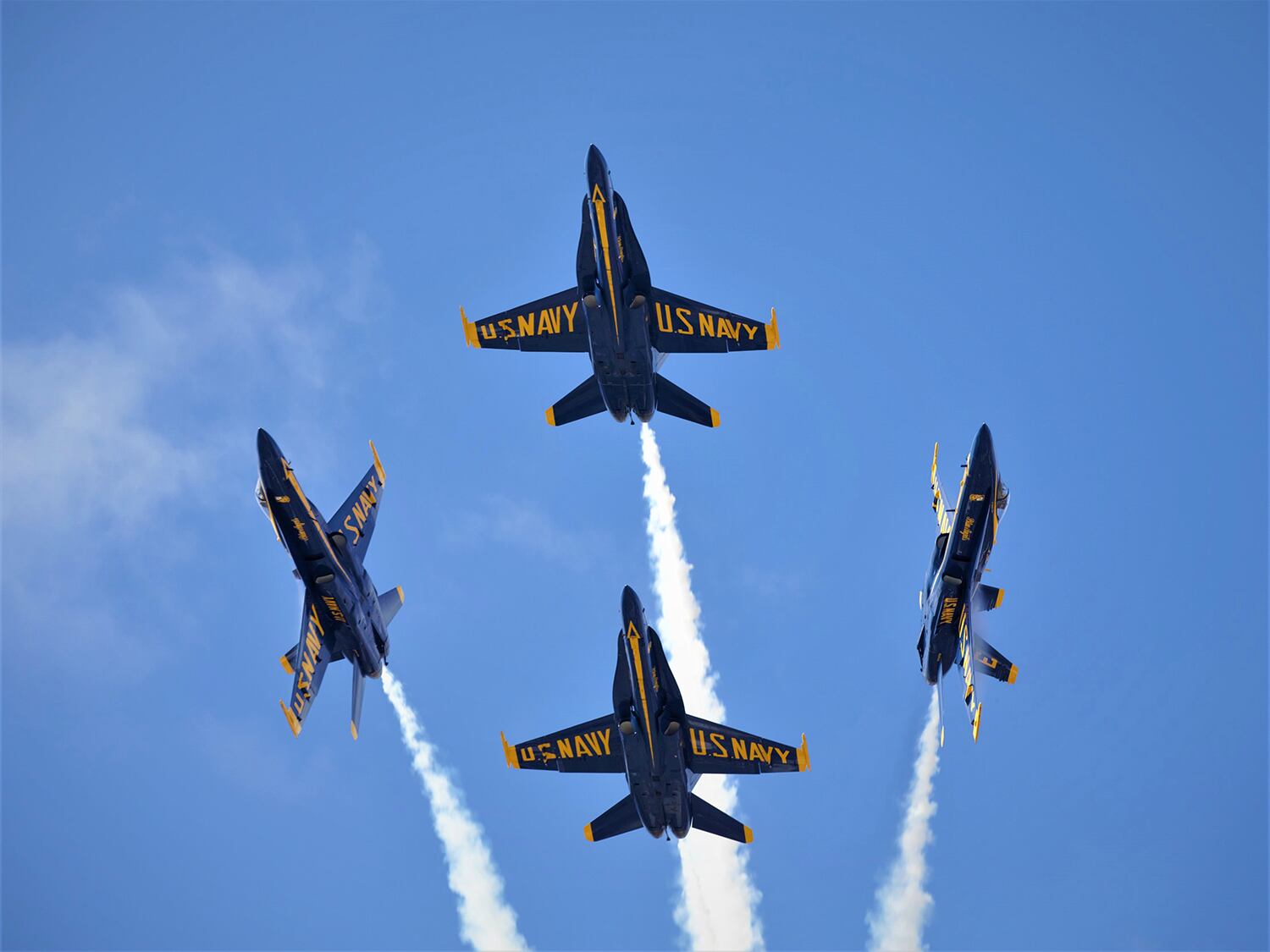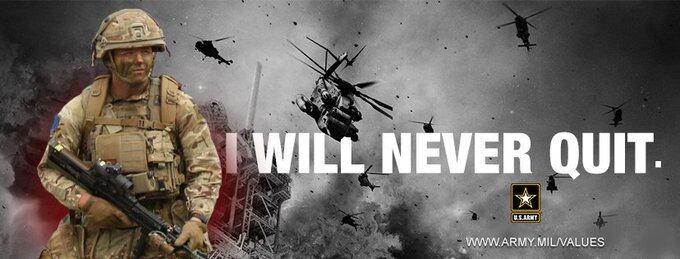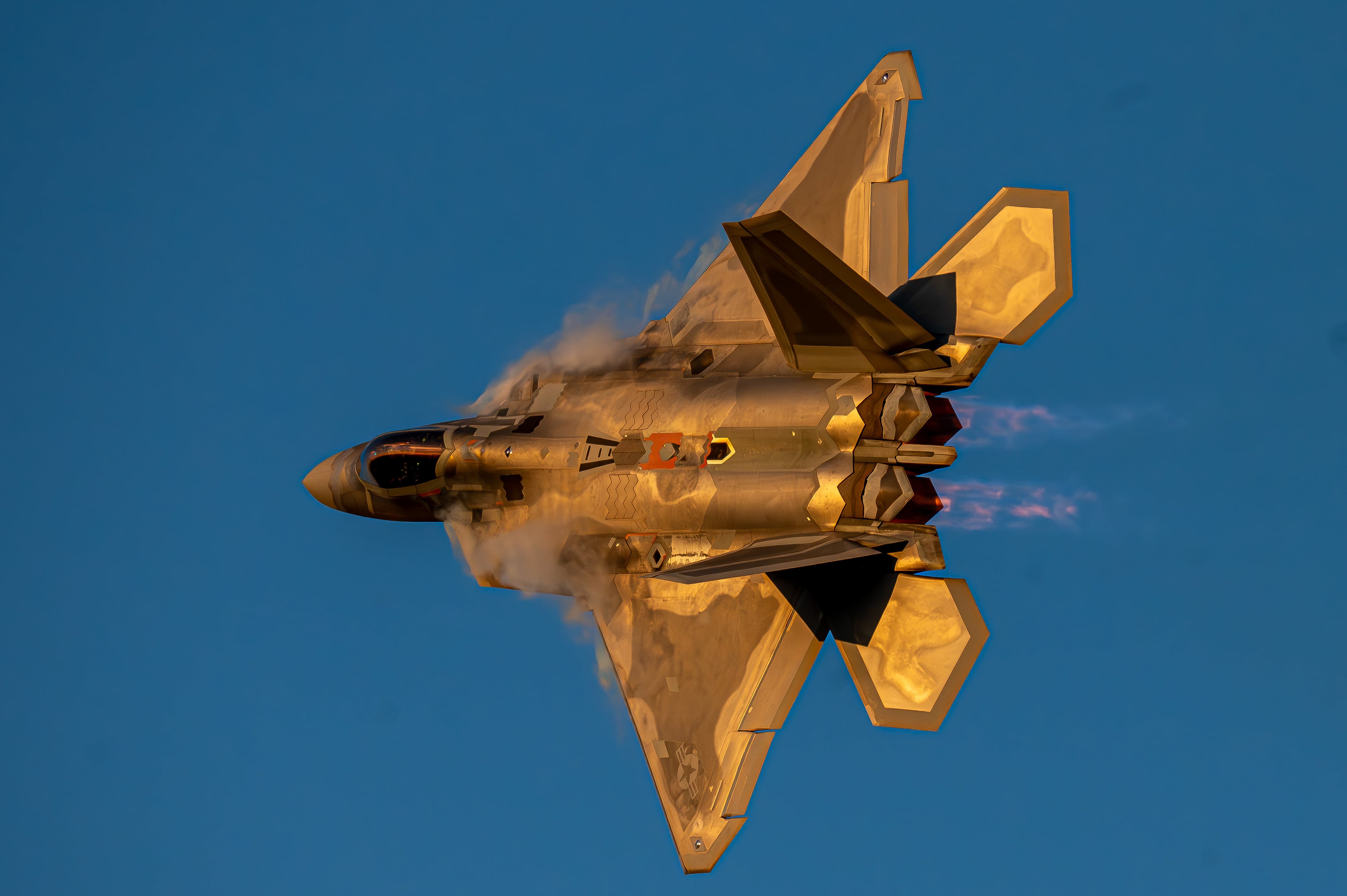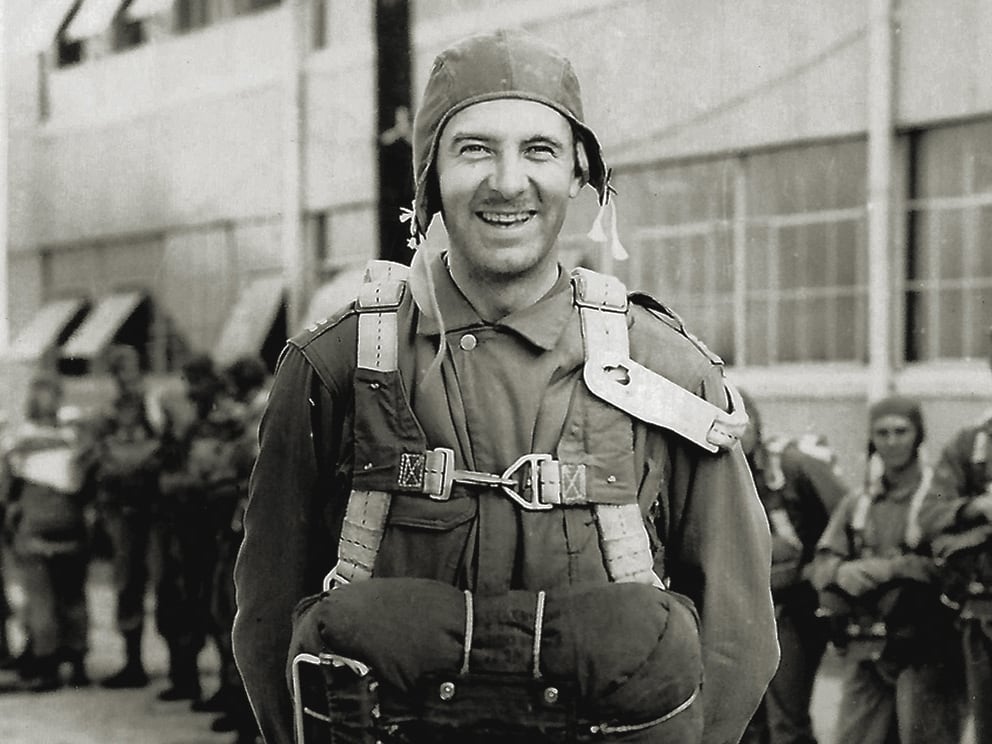For a nation enamored with yellow ribbons, PDA for men and women in uniform, and shouting “Support Our Troops” into the void until our lungs collapse, we sure seem to know very little about the individuals being supported.
At least that’s one takeaway from a series of recent military-themed social media gaffes on the part of accounts run by government departments and U.S. officials.
Friday yielded multiple mistakes of the sort when, first, the U.S. Department of State extended the U.S. Air Force a happy 73rd birthday wish that was accompanied by an image featuring F/A-18 Hornets flown by the Navy’s Blue Angels.
The image, which depicts the obvious blue and gold color scheme unique to the Navy’s flight demonstration squadron, includes one plane that even shows the underside of its wings, a part that universally includes “US NAVY” painted in size 11-million block font.

Echoing the State Department, Sen. Marco Rubio, R-Fla., sent the Air Force some birthday well wishes that, again, were accompanied by the Navy’s world-renowned team.
Never a state to be outdone, Texas Congressman John Carter ramped up the Air Force birthday-Blue Angels whoops parade with a jumbled image featuring an F-22 Raptor, the Blue Angels, and his campaign insignia.
Even the mistakes are bigger in Texas.

Navy officials eventually caught on to the trend of gross misidentification.
“Happy birthday @usairforce, but we’re not giving you the @BlueAngels,” the Navy Chief of Information account tweeted. “Aircraft carriers are also only @USNavy.”
Most of the proofreading-free accounts wisely deleted their misguided well-wishes once they arrived at the realization that a plane in the air does not automatically render it an Air Force plane. But thanks to Politico editor and dad joke connoisseur Dave Brown, there remains a treasure trove of commemorative screenshots.
Still, the Air Force’s birthday was just another example of a profound lack of basic military understanding by those who so often boast of military adoration until blue in the face.
A campaign arm of the Republican National Committee and President Donald Trump’s reelection campaign, for example, recently circulated a “Support Our Troops” graphic featuring silhouetted Russian soldiers — one holding a Russian-made AK-74 rifle and another a German-made G36K — underneath three Russian MiG-29 fighter jets, a slip-up first reported by Politico.
In theory the sentiment is not incorrect, since there was no specification on which troops are being supported. Still, it was just one of the litany of military-related social media fallacies to emerge during this week alone.
The image, which was poached from a Shutterstock photo, was created by Russia-based photographer Arthur Zakirov, who confirmed to Politico that the campaign image was “a completely recreated scene from various photographs of mine.”
“Today you hear about the Kremlin’s hand in U.S. politics,” he joked. “Tomorrow you are this hand.”
In Soviet Russia, troops support you.
The image marked another foreign service miscue for the administration, which, in 2015, tweeted a campaign graphic featuring Nazi Waffen SS World War II reenactors in the bottom right corner.
But don’t fret about a politicized slant on military-themed miscues — these inaccuracies on the part of politicians are a bipartisan pastime.
Presidential hopeful Joe Biden made headlines recently for exhibiting a concerning pattern of recounting military stories that never actually happened. In 2019 Biden recalled a harrowing tale of a Navy captain in Afghanistan that was flooded with acts of extraordinary valor.
“This is the God’s truth,” Biden told the meeting hall in New Hampshire. “My word as a Biden.”
Interviews conducted by the Washington Post of more than a dozen troops, commanders and Biden campaign personnel, however, revealed that nearly every detail of “God’s truth” was false. Biden, the Post reported, appeared to combine portions of three separate events into a single story.
Then there was 2012, when the Democratic National Convention showcased glorious footage of Russian ships steaming powerfully across open seas as a way to honor U.S. troops and their service.
(As our friend Paul Szoldra over at Task and Purpose points out, there truly is a tweet for all occasions.)
Military-centric miscues on social media may occur relatively often, but seldom is the source of the mistake the military itself.
On September 16, the U.S. Army’s official Twitter account tweeted a composite graphic featuring a soldier flanked by the words “I will never quit,” a line taken from the service’s Soldier’s Creed and Warrior Ethos.

The text of the tweet asked, “How do you live the #WarriorEthos?”
Twitter users may have found the message more inspiring if the soldier, or any of the helicopters, actually belonged to the U.S. Army — or even the United States.
Thanks to the blue patch on his right shoulder and the bullpup-style –– a distinct design in which the rifle’s magazine is located behind the trigger assembly –– SA80 assault rifle, Twitter users quickly identified the figure in the foreground as a British Army soldier.
Noting the helicopters in the image, Darren Olivier, a South African military analyst and director of the African Defence Review, tweeted that that “the foremost helicopter is a USMC CH-33 and the helicopters in the background are all from a South African Air Force flypast featuring two Oryxes, two Rooivalks, three A109s, a BK-117 and a [South African Air Force Museum] Alouette III.”
The Twitter account Angry Staff Officer, a semi-pseudonymous page operated by a National Guard officer, said, “A photo of a British soldier, a USMC helo, and some other foreign rotary winged aircraft? C’mon y’all, this isn’t that hard.”
“Sometimes people make mistakes, and that is what happened in this case,” an Army spokesperson said in reference to the since-deleted tweet.
Sgt. Maj. Mike Lavigne, sergeant major of Army Public Affairs, responded to the gaffe, saying, “Thank you for the dozens of DMs and tags. This is not the way the Army does business. 99% of our social media game is strong, but when it’s not, someone is held accountable and from today on, that’s me. See something wrong? I’m your POC.”
Lavigne might be your POC for social media mishaps, but if you need articles that elicit a response of, “This isn’t news,” I’m your huckleberry.
Jon Simkins is the executive editor for Military Times and Defense News, and a Marine Corps veteran of the Iraq War.
Davis Winkie covers the Army for Military Times. He studied history at Vanderbilt and UNC-Chapel Hill, and served five years in the Army Guard. His investigations earned the Society of Professional Journalists' 2023 Sunshine Award and consecutive Military Reporters and Editors honors, among others. Davis was also a 2022 Livingston Awards finalist.
Tags:
air force birthdayair force birthday blue angelsblue angels showsblue angels state departmenttrump nazi ss graphictrump support our troops russian jetstrump support our troopsbiden military storybiden false storyIn Other News














